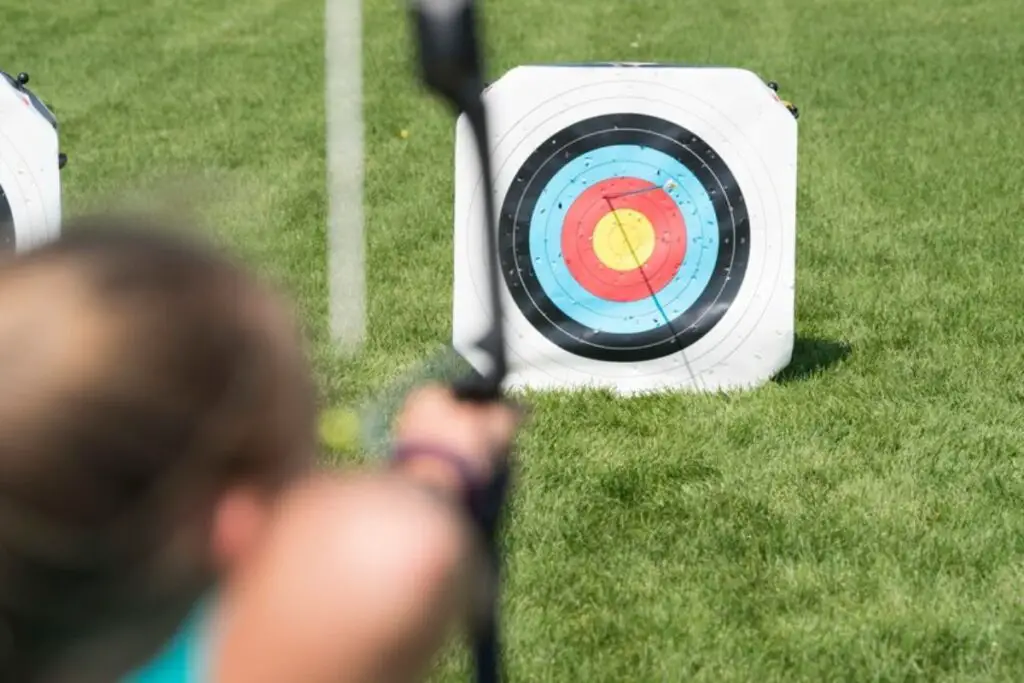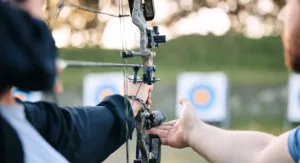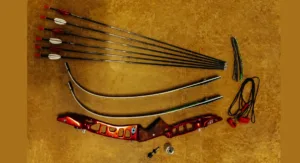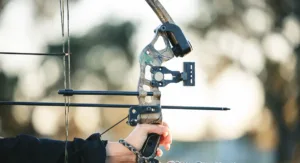Archery requires precision and practice. Whether you’re an experienced archer or just starting, having the right target can make all the difference. From foam block targets to DIY projects, we’ll cover everything you need to know to choose, use, and maintain the right archery targets for your needs.
Introduction
Archery targets are more than just a backdrop for your arrows—they’re essential for honing your skills, perfecting your aim, and enjoying the sport. But how do you choose the right one? Why is it so important? And can you make your own? This guide will answer all these questions and more.
The Importance Of The Right Archery Target
Having the right archery target is crucial to improving your skills. A well-chosen target helps you practice accurately, understand your progress, and maintain safety. But with so many options, where do you start?
Understanding Archery Targets
Archery targets come in various types, each with different advantages and uses. Let’s explore the different kinds and their specific applications.
Foam Block Targets
Foam block targets are popular for their durability and portability. They are made from high-density foam that can withstand repeated shots and are easy to transport. Ideal for practice sessions, these targets can be used with both recurve and compound bows. Their layered design allows arrows to penetrate deeply, making them the ideal for honing your aim.
Bag Targets
Bag targets are another excellent choice for archers. Filled with synthetic fibers, these targets stop arrows quickly and efficiently. They are generally larger and heavier than foam block targets, providing a stable and reliable practice surface. Bag targets are especially useful for beginners due to their forgiving nature and ease of arrow retrieval.
3D Targets
For a more realistic practice experience, 3D targets are the way to go. Shaped like animals, they provide a lifelike challenge for hunters and competitive archers. Made from foam, these targets replicate real-world hunting scenarios, improving your accuracy and target recognition skills. They are also suitable for outdoor ranges and club competitions.
Paper Targets
Paper targets are the simplest and most affordable option. Paper targets are used indoors and competitions. They are often mounted on a target stand or backing material. While they may not offer the same durability as foam or bag targets, they are suitable for scoring practice and sighting with your bow.
Target Archery In Competitions
Competitive archery requires standardized conditions and measurements for fairness and accuracy. Archery GB says target archery competitions use specific target face dimensions and scoring systems. Recurve and compound bows are commonly used, with different categories for each type. Understanding these standards can help you prepare better for competitions.
Choosing The Right Archery Target
Selecting the right target depends on various factors, including your skill level, archery type, and specific needs. Here’s how to make an informed choice.
Factors To Consider
When choosing an archery target, consider the material, durability, and ease of arrow retrieval. Beginners may prefer bag targets for forgiveness, while advanced archers might opt for 3D targets to simulate real-life scenarios. Durability is essential for frequent practice, and ease of arrow retrieval ensures a smooth practice session.
Recommendations For Different Skill Levels
- Beginners: Bag targets are ideal due to their forgiving nature.
- Intermediate: Foam block targets offer durability and performance.
- Advanced Archers: 3D targets provide realistic practice and enhance hunting skills.
Pros And Cons Of Each Type
Each target type has its advantages and disadvantages. Foam block targets are durable but expensive. Bag targets are affordable but wear out quickly. 3D targets offer a more realistic experience, but they are often more expensive. Paper targets are budget-friendly but fragile.
DIY Archery Targets
Creating your own archery targets can be cost-effective and customizable. Let’s explore some DIY projects you can try.
Why DIY?
DIY archery targets offer several benefits, including cost-effectiveness and customization. You can design them to suit your specific needs and preferences. Plus, making your own targets can be fun and rewarding.
Step By Step Guide To Building Your Own Archery Target
Homemade Paper Target Stand
To build a sturdy and adjustable stand for paper targets, you’ll need PVC pipes, connectors, and cardboard backing. Assemble the stand by cutting the pipes to your desired height and width, then connecting them using PVC connectors. Attach the cardboard backing, and you’re ready to mount your paper targets.
DIY 3D Target
Create a lifelike 3D target using foam and cardboard. Cut the foam into the shape of your desired target, such as a deer or bear. Use cardboard to add details and reinforce the structure. Paint the target to enhance its appearance and realism.
Recycled Bags Target
Make an eco-friendly bag for Target using recycled materials like old clothes, plastic bags, and burlap sacks. Fill the sack with recycled materials and sew it shut. This durable target can withstand numerous shots and is easy to repair.
Portable Foam Block Target
Construct a lightweight and portable foam block target with high density foam sheets. Cut the foam into layers and glue them together, ensuring security. Add handles for easy transportation, making it convenient for indoor and outdoor use.
Safety Considerations
When creating DIY targets, safety is paramount. Ensure your target is stable and capable of stopping arrows. Avoid using materials that may ricochet or damage to your arrows. Expert opinions from organizations like ArcheryGB recommend regular inspections to maintain safety standards.
Also Read : Beginners’ Buying Guide Backyard Archery Target
Maintaining And Caring For Your Archery Targets
Proper maintenance can prolong your targets’ life and ensure consistent performance. Here are some tips to keep your targets in top condition.
Regular Maintenance Tips
Inspect your targets regularly for signs of wear and tear. Patch up any holes or damages promptly to prevent further deterioration. For foam targets, rotate the target periodically to distribute wear evenly.
Repairing Common Damages
Foam and bag targets can develop holes and tears over time. Use foam fillers or fabric patches to repair these damages. Regularly check your target’s integrity to ensure its effectiveness.
Storage Recommendations
Store your targets in a dry and cool place to prevent moisture damage. Avoid exposing them to direct sunlight for prolonged periods, as this can degrade the materials. Proper storage ensures your targets remain in good condition for longer.
Resources And Further Reading
For those looking to deepen their knowledge, here are some valuable resources.
Authoritative Sources
- Archery GB: Offers comprehensive information on archery standards and practices.
- World Archery: A global authority on archery, providing valuable insights and updates.
- National Field Archery Association: Focuses on field archery and provides resources for archers of all levels.
Books And Articles
Explore books like “The Art of Archery” and articles on reputable websites for in-depth learning. These resources can help you understand archery nuances and improve your skills.
Expert Forums And Communities
Join online forums and communities like Archery Talk and Reddit’s r/Archery to connect with fellow enthusiasts. Sharing experiences and tips can enhance your understanding and enjoyment of the sport.
Also Read : How to Choose Your First 3D Archery Target
Conclusion
Choosing the right archery target is essential for improving your skills and enjoying the sport. Whether you opt for foam, bag, 3D, or DIY targets, each type offers unique benefits. Regular maintenance and proper storage can prolong your targets’ life, ensuring consistent performance.
We hope this guide has provided valuable insights and practical tips. Feel free to share your own experiences and tips in the comments below.
Frequently Asked Questions (FAQs)
What Is An Archery Target Called?
An archery target or a butt is what is commonly refereed to as a target or a butt in archery.
What Is The Target Used In Archery?
There are many types of archery targets, including foam blocks, bag targets, 3D targets, and paper targets.
What Are The Target Areas For Archery?
A typical archery target area is made up of a number of concentric rings, with each ring representing a different score value, corresponding to the target area.
What Are The Target Points In Archery?
Target points in archery refer to the scores assigned to each ring on the target face. The center ring, or bullseye, has the highest point value.
What Is 5 Spot Archery?
5 spot archery is a target setup where five smaller targets are arranged on a single target face. This setup is often used in indoor archery competitions.
What Is A Target Stand In Archery?
A target stand is a structure used to hold and support the target during practice or competition.
Recommended Articles
- How To Carry A Bow – Tips & Techniques For Archers
- An Ultimate Bow Size Chart Guide For Archers
- The Archer’s Craft: Understanding Parts Of Recurve Bow
- The Ultimate Guide To The Best Archery Brands Of Compound Bows
- How To Utilize Recurve Bow Sights: A Comprehensive Guide
- Unlocking The Mysteries: A Deep Dive Into Types Of Compound Bows








5 thoughts on “Master Your Aim With The Ultimate Guide To Archery Targets”
Comments are closed.